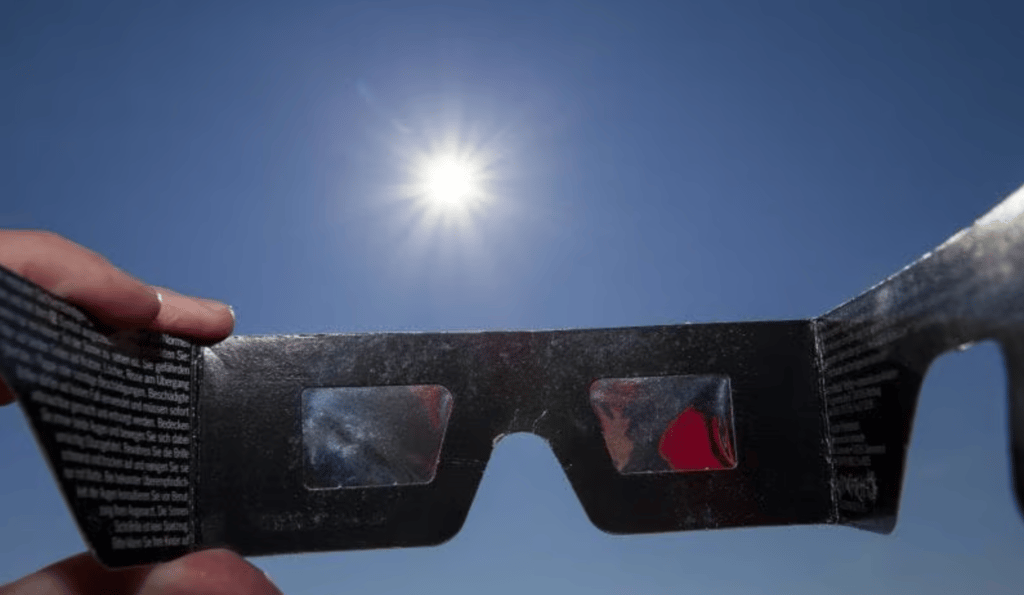
A solar eclipse will be observed in North America on April 8. Everyone in the United States will view at least a partial solar eclipse, but only those within the 115-mile (185-kilometer) path of totality will see the sun’s face fully obscured by the moon’s shadow for up to 4 minutes and 28 seconds.
Here are six suggestions for a safe and pleasurable viewing of the solar eclipse.
1. Use solar eclipse glasses
Solar eclipse glasses are both plentiful and affordable. Buy them before supplies run out, and only from verified suppliers on the American Astronomical Society’s website. Only then can you be certain that they comply with the ISO 12312-2 international standard, which states that they reduce visible sunlight to safe and pleasant levels while blocking all but a small fraction of solar UV and IR rays.
Do not use sunglasses, solar filters designed for cameras and telescopes, smoked glass, welder’s goggles, photographic or X-ray film, potato chip bags, or DVDs. Neither of these strategies is safe for the eyes.
2. When should you use the solar eclipse glasses?
Solar eclipse glasses can be used to view the sun at any time. Solar eclipse glasses are typically used to view the sun from the moment the moon begins to cross it, a period known as first contact. To view the eclipse, you must use solar eclipse glasses whenever the sun is only partially covered, which is the majority of the time on April 8 across North America.
3. Prepare well if you are traveling to view the eclipse
Although the path of totality on April 8 will pass through several major cities and metropolitan regions, it also crosses a large amount of wilderness. Many individuals will seek a bright sky, which may lead them to places they had not expected to explore. Remote areas of Texas, Arkansas, Missouri, New York, Vermont, New Hampshire, and Maine, in particular, lack facilities and gas stations. Bring everything you’ll need, including a full fuel tank, extra food, water, cash, and toilet paper.
4. Keep track of weather and conditions
In April, expect the unexpected, from snow in the Northeast to tornadoes in the Midwest. Mountains, lakes, and woods may provide a magnificent backdrop in remote areas of the northern United States and Canada, but backcountry conditions can be harsh at this time of year.
5. Pick a safe viewing spot in the city
If you opt to observe the eclipse from a city sidewalk—perhaps even during a lunch break at work—be careful. When you wear solar eclipse glasses, it’s easy to wander into risky circumstances like roadways. An open field or park is the best, simplest, and safest place to observe an eclipse, as it will most certainly offer a much better view than city streets, where structures can easily block the view.
The largest cities along the trail are Mazatlán and Torreón, Mexico; San Antonio, Austin, and Dallas, Texas; Indianapolis, Indiana; Hamilton, Ontario; and Montreal, Quebec.
6. Check live traffic situation while venturing out during the eclipse
Relocating at the last minute in pursuit of clear weather is not advisable unless the roads are clear and you have several backup plans. Using Google Maps or similar apps to watch live traffic information before and during the eclipse is a fantastic method to keep track of the situation.
